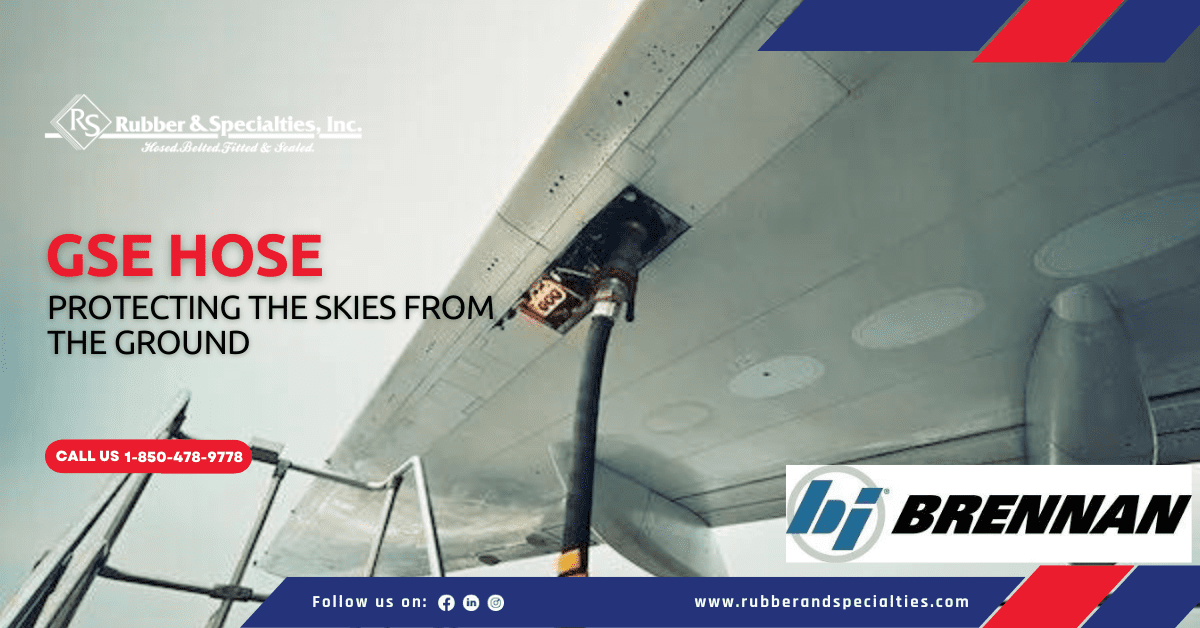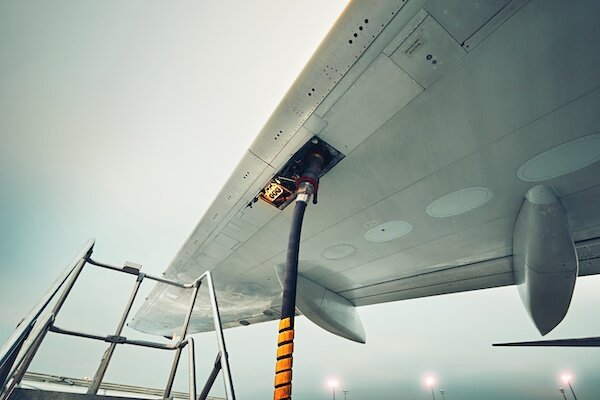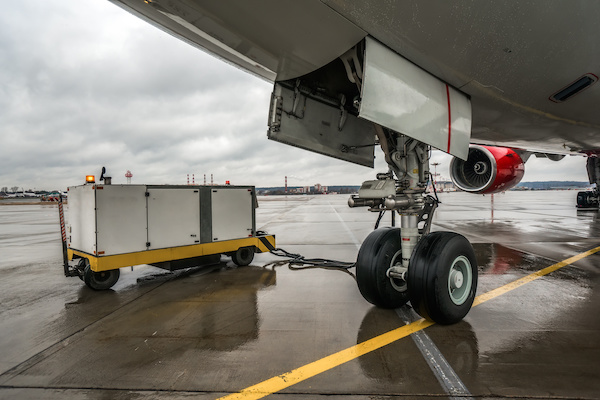
GSE Hose: Protecting the Skies from the Ground
Ground Support Equipment (GSE) services aircraft at commercial airports and air force bases in between flights and during scheduled maintenance. They are also used to perform other tasks around the runway and taxi areas. SAE AIR4286 puts forth policies, procedures and practices required to maintain mobile and fixed ground support equipment at airport passenger and cargo terminals. While ISO 6966 specifies the safety requirements to be considered by manufacturers for the design of aircraft, ground support equipment and military GSE is governed by a variety of GSA Schedules.
GSE performs many services for airplanes from the time they arrive at a terminal gate until they depart for the next flight. Hydraulic systems and hoses operating under high pressure are essential in airport ground support equipment, including:
- Deicers
- Jetways
- Pushback tractors
- Snowplows
- Cargo loaders
- Refueling pump units
- Auxiliary power units
- Airplane tugs and tractors
- Baggage and cargo belt loaders
The speed at which the aircraft is serviced, along with accuracy and efficiency are extremely important for ground handling services to ensure fast and safe turnaround time. Airline travel is the most expensive to operate- and the less time on the ground, the more profitability to the carrier in the commercial sector.
Refueling Hose is one of the most widely used hoses in ground support. Though not hydraulic, these hoses can experience frequent abrasion and wear. For added
For added protection, spiral guard wraps are often used to ensure safe and efficient aviation refueling. These hose wraps come in a variety of colors such as yellow or orange, which are typically used on refueling hoses to provide high visibility and flex strain relief. Another product used for fuel line hose protection is Blue Vinyl Wrap to guard against abrasion and provide resistance to UV exposure as well as a wide variety of chemicals. They are also available in other colors, such as green and yellow, for safe visibility.
Jetways, also known as jet bridges, are movable bridges on wheels used to connect the airport building with the airplane door. They are sometimes referred to as hydraulic bridges by ground crew. Jetways are driven by an operator and powered by hydraulic systems to move and adjust its position and elevation. Since many of the hydraulic hoses in the system are frequently flexed, abraded, potentially over-pressurized or forced into tight bend radiuses, various hose protection products should be considered.
Airport Snowplows & Brooms
Snowplows at airports are not what you might see on the highway– even in places like Minnesota where the maximum legal width of a plow blade is 8 ½ feet.
Airport plows are huge earth-moving types of equipment, with blades that can be up to 30 feet wide and can contain up to 57 yards of snow. These machines can also have enormous high-performance airport runway broom attachments for clearing debris. It takes significant force from the hydraulic power unit (HPU) to supply enough energy to lift, lower, float and angle the blades and brooms used on these massive machines.
As with heavy equipment like front end loaders, the hydraulic hoses on airport snowplows are frequently moving, exposed to the elements and susceptible to abrasion by ice, rocks and other debris. It is often necessary to bundle hose on this equipment for containing multiple hoses together. Additionally, protective sleeve wraps and other hose protection products are widely used on airport snowplows. This includes heavy duty spring guards to shield the hose from abrasion, cuts, gouges, crushing, along with powerful impact or compression from components.
The following products have applications on most ground support equipment:
Hydraulic hose sleeving that contains pressure and fluids in the event of hose failure has application on many GSE, keeping fluids from escaping during hose burst or pinhole leaks. This line-of-sight sleeving shields equipment operators and the environment from the consequences of hose failures.
Grip shrink tubing to reinforce the connection at the fitting, which has an adhesive lining for permanent sleeve attachment.
Hose Protectors, also often used near the fitting connection, are made of durable material with a high wear factor to protect against point of contact wear. These hose protectors are designed with molded grooves to fit cable ties for securing to the hose.
Bend Restrictors, are used when hydraulic hose is routed through tight spaces, or the minimum bend radius could be exceeded. They prevent the hose from bursting at the outside of the bend or at one of the fittings. To reduce bending stress, use bend restrictors to add protection, prevent damage to the hose, reduce the chance of hose burst and extend its service life. The upper lip attaches to the hose fitting to hold the restrictor in place and eliminate the need for clamps or adhesives.
Conclusion
Various hydraulic hose protection products are used throughout ground support equipment; from hose used in hydraulics for lifting cargo loaders, to powerful hydraulics required in airplane tugs and tractors, to elevating the conveyor of baggage belt loaders. Some applications may even require special fire sleeving to protect hose and wiring against exposure to heat or flame hazards. If a hydraulic hose becomes overheated it can cause thermal expansion which will result in premature aging of the elastomers in the outer cover and internal hose tube, leading to dangerous hose burst.
GSE operations are highly demanding, requiring powerful hydraulic equipment that exposes hose to harsh conditions, along with fueling hose that supplies highly flammable jet fuel from the fuel truck to the plane. The necessity of hose protection products in both commercial and military ground equipment is vital for the safety of civilian and military personnel, along with the service life, costs and profitability of operations. Without maintaining effective maintenance on the ground, we run the danger of catastrophes in the skies and a weakened Air Force.

